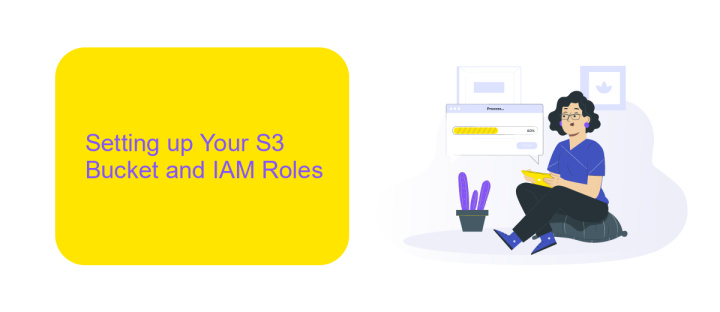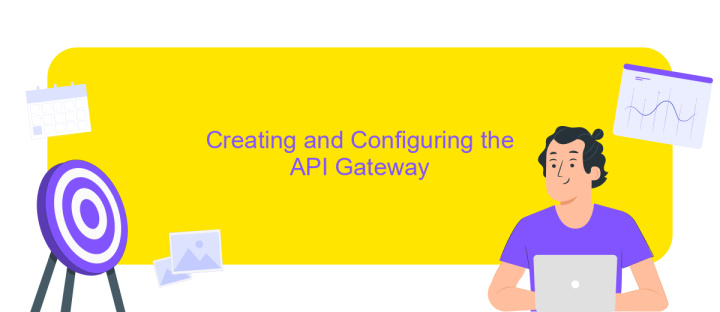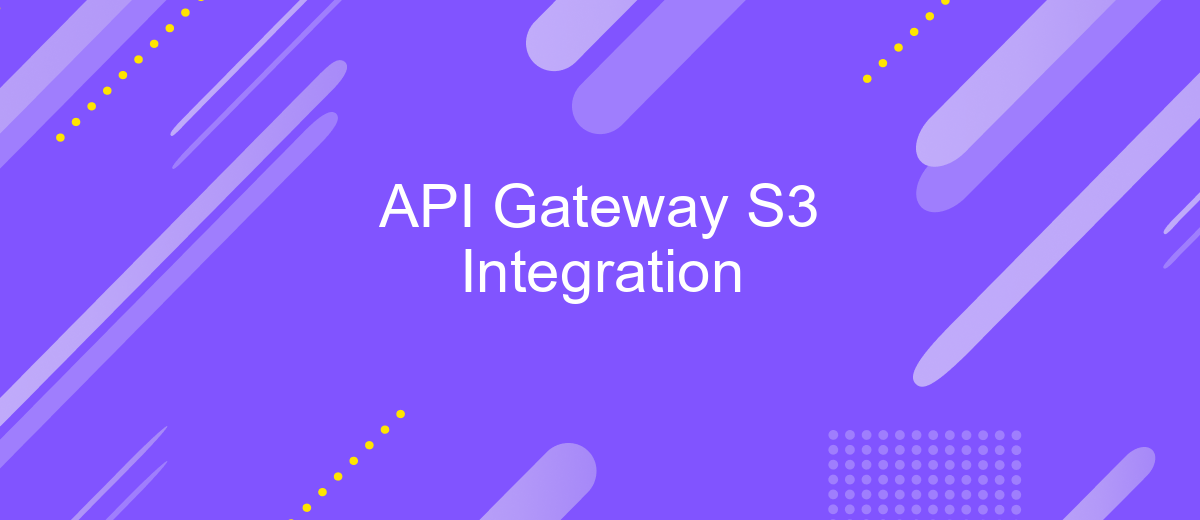API Gateway S3 Integration
In today's digital landscape, seamless integration between cloud services is crucial for efficient data management and application performance. API Gateway and Amazon S3 offer a powerful combination, enabling developers to securely manage and route API requests while leveraging S3's scalable storage capabilities. This article explores the integration of API Gateway with S3, highlighting key benefits, use cases, and best practices to optimize your cloud infrastructure and enhance operational efficiency.
Introduction to API Gateway and S3 Integration
API Gateway and S3 integration is a powerful combination that enables developers to create robust, scalable, and secure applications. Amazon API Gateway is a fully managed service that allows developers to create, publish, maintain, monitor, and secure APIs at any scale. On the other hand, Amazon S3 (Simple Storage Service) is a scalable object storage service that provides industry-leading durability, availability, and performance. By integrating these two services, developers can streamline data management and enhance application performance.
- Efficient data handling: Seamlessly transfer data between APIs and S3 buckets.
- Cost-effective: Optimize costs by using S3's pay-as-you-go storage model.
- Scalability: Easily scale applications to handle increased loads without compromising performance.
- Security: Implement robust security measures with IAM roles and policies.
Incorporating API Gateway with S3 provides a flexible and efficient way to manage data and APIs. This integration simplifies the process of building applications that require high availability and reliability. Developers can leverage the strengths of both services to create applications that are not only cost-effective but also scalable and secure. As a result, businesses can focus on innovation and delivering value to their users while relying on AWS's robust infrastructure.
Setting up Your S3 Bucket and IAM Roles

To set up your S3 bucket, begin by navigating to the AWS Management Console and selecting S3 from the list of services. Click on "Create bucket," and follow the prompts to specify your bucket's name and region. Ensure that you configure the necessary permissions to allow API Gateway access. This typically involves setting the bucket policy to allow actions such as 's3:GetObject' for the desired API Gateway role. Additionally, consider enabling versioning and logging for enhanced data management and security.
Next, configure the IAM roles necessary for seamless integration. Go to the IAM service in the AWS Management Console and create a new role. Select "API Gateway" as the trusted entity and attach the appropriate policies that allow S3 access, such as 'AmazonS3ReadOnlyAccess'. This role will enable API Gateway to perform actions on your S3 bucket securely. For those seeking a simpler integration process, consider using services like ApiX-Drive, which can automate and streamline the connection between API Gateway and S3, ensuring a more efficient setup.
Creating and Configuring the API Gateway

To create and configure an API Gateway for S3 integration, you must first access the AWS Management Console. Navigate to the API Gateway service and select "Create API." Choose the "REST API" option, as it provides the necessary features for integration with S3. Name your API appropriately, ensuring it reflects its purpose and functionality.
- In the API Gateway console, click on "Resources" and then "Create Resource." Define the resource path that will correspond to your S3 bucket.
- Next, select "Create Method" under the newly created resource. Choose the HTTP method (e.g., GET, POST) that aligns with your desired S3 operation.
- Configure the integration type by selecting "AWS Service" and specify "S3" as the target service. Input the necessary bucket name and other required parameters.
- Set up the required permissions by creating an IAM role that grants API Gateway access to your S3 bucket.
- Deploy the API by creating a new stage, allowing it to be accessed via a public URL.
Once deployed, test your API Gateway configuration to ensure it interacts correctly with your S3 bucket. This setup enables seamless access and operations on S3 resources through API Gateway.
Handling Authentication and Authorization

When integrating API Gateway with S3, handling authentication and authorization is crucial to ensure secure access to your resources. API Gateway provides multiple options to authenticate requests, such as using AWS IAM roles, Lambda authorizers, or Amazon Cognito user pools. Each method offers unique benefits and can be tailored to meet specific security requirements.
To authorize requests, you can leverage AWS IAM policies to define precise permissions for accessing S3 buckets and objects. By configuring IAM roles, you can control access based on the identity of the requester and the context of the request. This ensures that only authorized users or services can interact with your S3 resources through the API Gateway.
- AWS IAM Roles: Assign roles to users or services to manage access permissions.
- Lambda Authorizers: Implement custom authorization logic using AWS Lambda functions.
- Amazon Cognito: Use user pools to manage user authentication and authorization.
Implementing robust authentication and authorization mechanisms is essential for protecting your data and ensuring compliance with security standards. By utilizing the tools offered by AWS, you can build a secure and scalable API Gateway integration with S3, providing controlled access to your resources.


Testing and Deploying Your API Gateway S3 Integration
To test your API Gateway S3 integration, begin by creating a new API in the AWS Management Console. Define the necessary methods and resources, ensuring that they correctly map to your S3 bucket. Once configured, utilize the console's test feature to simulate API calls, verifying that requests and responses align with your expectations. Additionally, consider using tools like Postman for more comprehensive testing scenarios. For a seamless integration experience, platforms like ApiX-Drive can help automate and streamline your testing process, providing valuable insights and reducing manual effort.
After successful testing, proceed to deploy your API. In the AWS Management Console, create a new deployment stage, assigning it a suitable name like 'production' or 'development'. Monitor the deployment process closely, ensuring that all configurations are correctly applied. Once deployed, validate the integration by invoking the API endpoint and confirming that it interacts with your S3 bucket as intended. Regular monitoring and logging are essential to maintain the integration's performance and reliability. ApiX-Drive can further assist by offering automated monitoring solutions, helping you manage your integrations efficiently.
FAQ
How does API Gateway integrate with Amazon S3?
What are the benefits of using API Gateway with S3?
Can I automate the integration between API Gateway and S3?
How can I handle authentication when using API Gateway with S3?
What are some common use cases for API Gateway and S3 integration?
Routine tasks take a lot of time from employees? Do they burn out, do not have enough working day for the main duties and important things? Do you understand that the only way out of this situation in modern realities is automation? Try Apix-Drive for free and make sure that the online connector in 5 minutes of setting up integration will remove a significant part of the routine from your life and free up time for you and your employees.

